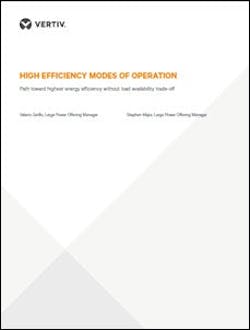High Efficiency Modes of Operation: Path Toward Highest Energy Efficiency Without Load Availability Trade-Off
One of the most widely discussed issues throughout the world today is the rapidly increasing price and demand of energy supply. Along with this comes the broadening awareness of the environmental impact and depletion of fossil fuels, which has created a natural drive towards energy saving and the widely encouraged use of renewable energy sources, energy conservation best practices, and the development and advancement of energy efficient standards, processes and technologies. Energy efficiency is key in today’s market.
As maximum uptime is paramount for many world-leading organizations, the presence of a UPS is often an indispensable prerequisite for a reliable power infrastructure able to achieve maximum load safeguarding and conservation.
The most common UPS topology currently used in the industry is double conversion; nevertheless, most UPS suppliers have introduced Eco Modes of operation to further increase the levels of energy efficiency of the UPS.
This white paper from Vertiv analyzes potential drawbacks of Eco Mode types of operation, further highlights elements to consider when using these modes of operation, and gives a review of field results for technologies like the Liebert Trinergy Cube UPS and more.
